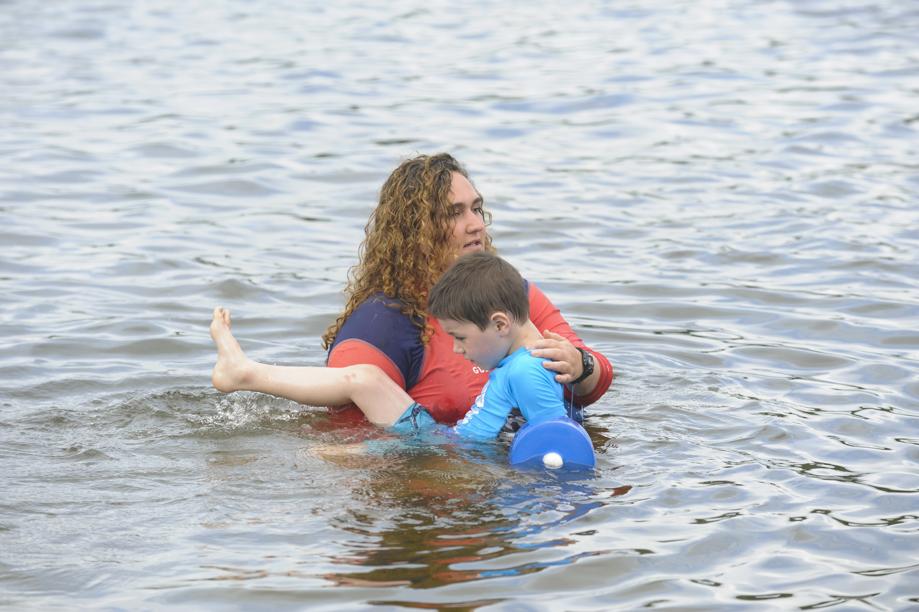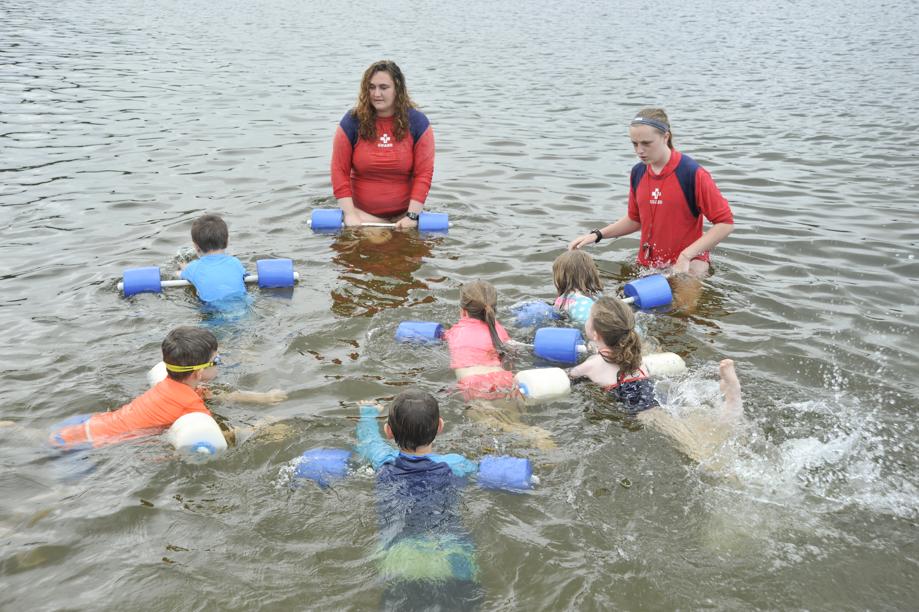


O
n a recent weekday morning, six preschoolers sat on the water’s edge at Long Lake Beach in Littleton, kicking, splashing, and squealing under the watchful eye of swimming instructor Nicole Cochis and 15-year-old junior lifeguard Caroline Sullivan.
“Gradually, there’s more of you in the water,’’ said Cochis, 20, explaining the day before the class how she teaches children to swim. “We ease them into the water.’’
Cochis, a college student, oversees the waterfront for the town’s Parks and Recreation Department. She is American Red Cross-certified, grew up on the lake, and learned to swim there almost as soon as she began walking.
“When I was little, we were immersed in the lesson,’’ Cochis said, contrasting games of Ring Around a Rosie with today’s gradual immersion that begins on the beach.
For generations, learning to swim has been an annual rite of summer, and in many ways, whether at the local pool, the YMCA, or the town beach, the drill remains the same: Get comfortable in the water, learn the techniques, and practice, practice, practice.
But instructors say the process has become more fluid and less driven by checklists. In the old days, a sloppy freestyle or an inefficient breast stroke kick might keep a child from advancing to the next class. Today, one level flows into the next, giving kids the opportunity to improve as they progress.
When Cochis learned to swim, her instructors used floating barbells, foam noodles, and other “floaties’’ to help fledgling swimmers get comfortable — accessories she and her staff continue to employ. A special treat at the end of a class was — and still is — a ride on the lifeguard’s rescue board, a half-dozen small children sitting side by side as the instructor guides the craft.
At pools and lakes, instructors teach students how to roll over on their backs if they need to rest while swimming in deep water. They demonstrate how to climb out of the pool, via ladder or stairs. And they explain why these strategies are so important.
But sink or swim is out.
“It’s a different atmosphere today,’’ said Cochis, describing a culture that emphasizes safety and downplays challenge. “My brother wouldn’t dunk his head under and my mom said to the instructor, ‘Just make him do it.’ ’’
At the MetroWest YMCA in Framingham, the first week of swimming classes were getting underway in the indoor pool on a steamy afternoon at the end of June.
“The new philosophy of swimming lessons is to work more with building confidence,’’ said Benjamin Allis, the 30-year-old aquatics director. “We encourage them to try new things, to challenge themselves. It’s not so much about technique. We want them to gain a positive experience in the water, self-esteem and appreciation.’’
Allis, who holds a degree in anthropology and taught English as a second language in Korea and Mexico for five years, accommodates a diverse population at the YMCA, including children from deaf, immigrant, and developmentally disabled communities.
“We begin with getting comfortable in the water, understanding the safety aspect, talk about why it’s important to swim with an adult,’’ Allis said. “The goal of the class depends on the level of the child.’’
Michael Phelps and the 2016 Summer Olympics are inspiring more kids to learn to swim at the Groton Country Club this summer. But higher enrollments haven’t changed the teaching methods.
“Every level has a safety component,’’ said aquatics director Carol Wright, who has a summer contract with the town, runs her own aquatic management business, Swimpro Aquatics, and is active in Starfish Aquatics Institute, an international program dedicated to preventing drowning.
Wright started teaching children to swim almost 30 years ago, after donating a lesson at an auction and getting rave reviews from the mother, whose children learned to swim during a single lesson.
“I knew that going underwater was paramount,’’ she said. “The second you get them to go underwater, they will learn to swim instantly.’’
Over the years, Wright has urged parents to learn to swim if they didn’t know how, and she’s relentless in educating adults about how quickly an unwatched child can go under.
“Every kid should be on a swim team for a year, four to five times a week to build up endurance, become a lifelong strong swimmer,’’ she said.
Hattie Bernstein can be reached at hbernstein04@icloud.com.



